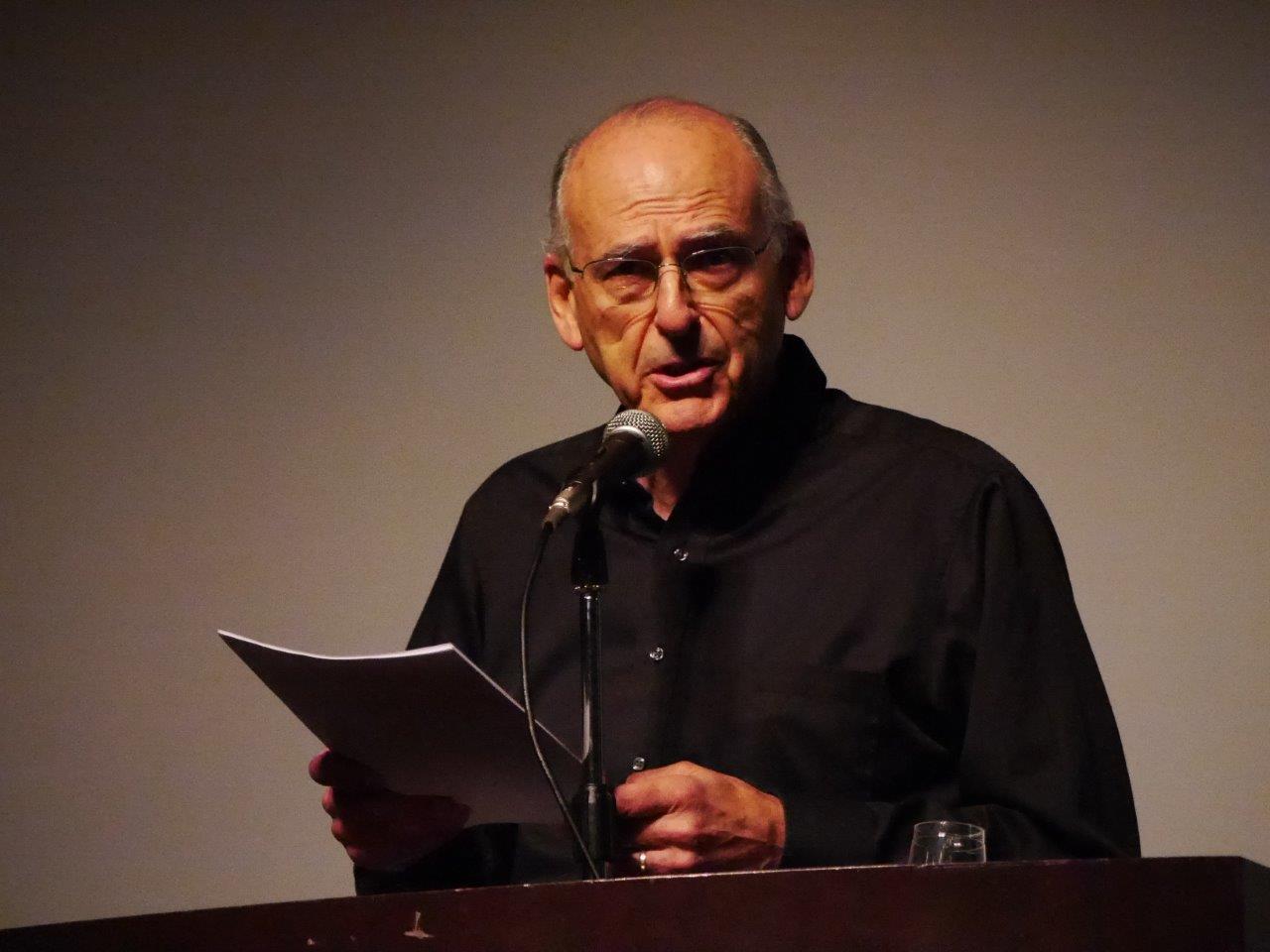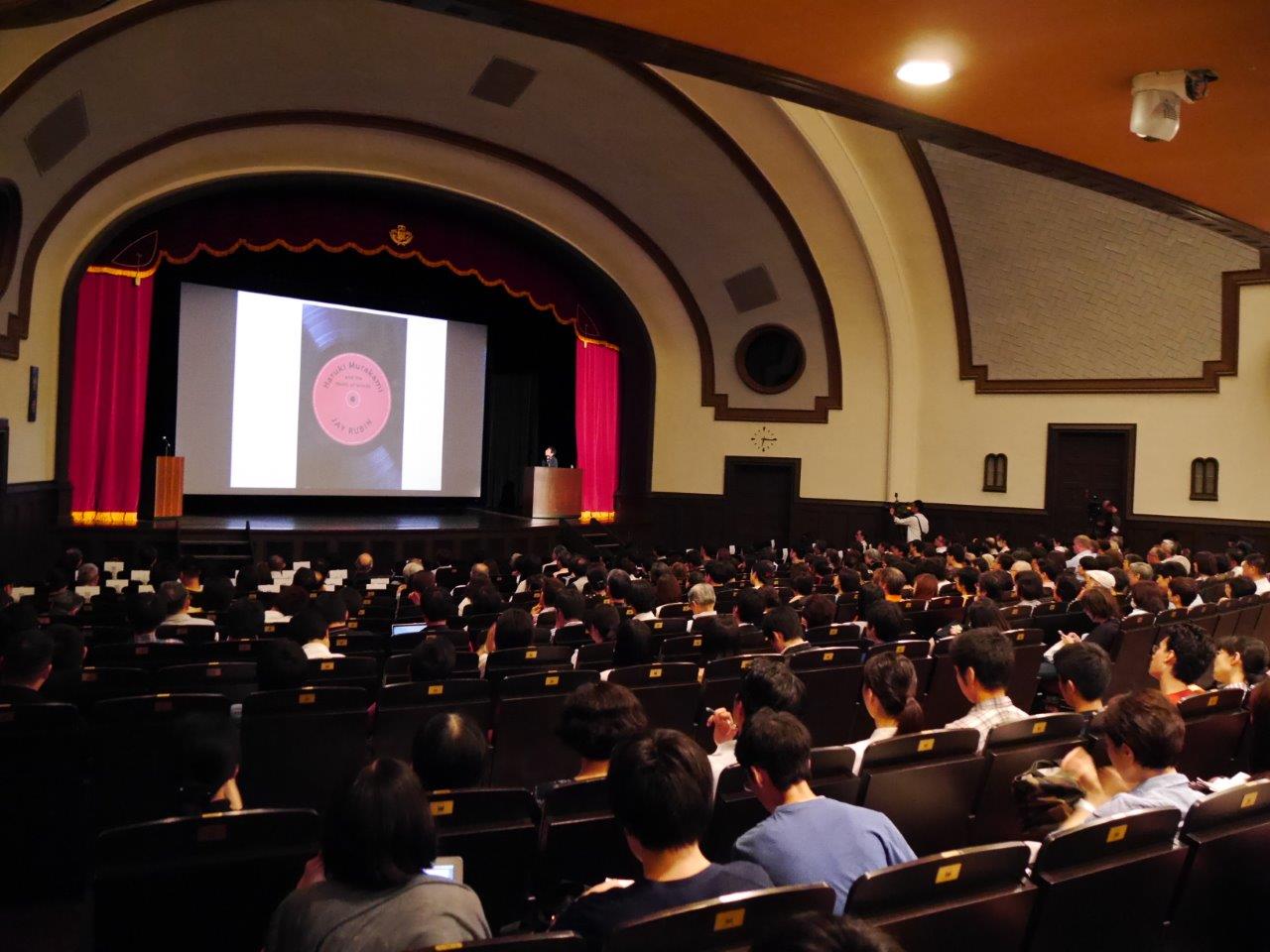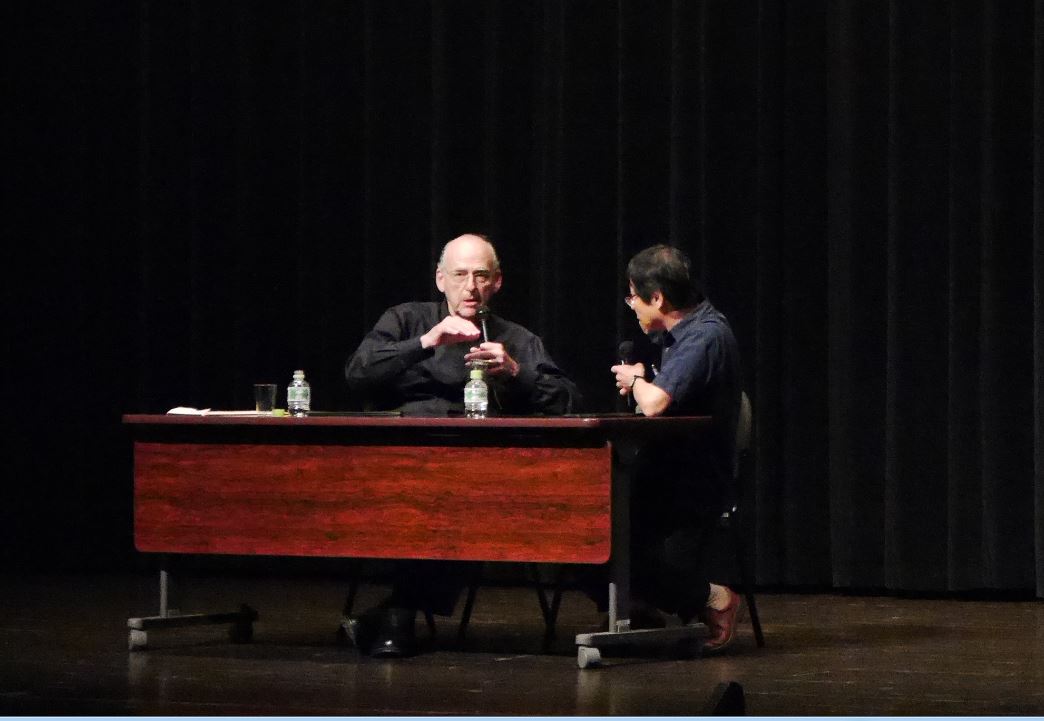Renowned translators Jay Rubin and Motoyuki Shibata visit Waseda to discuss Japanese literature
Wed, Aug 26, 2015-
Tags

Rubin speaks about his career, his first novel, and relationship with Murakami
On July 30, Waseda University hosted a lecture by Jay Rubin and Motoyuki Shibata titled “Japanese Literature and Translation – Soseki, Akutagawa, Murakami, and Beyond.” The lecture at Okuma Auditorium was a huge success, attended by some 500 people. The lecture was held to commemorate the publication of Harvard University Emeritus Professor and translator Jay Rubin’s novel “The Sun Gods” (Chin Music Press/Shinchou Publishing).
In the first half of the lecture, co-translator of Rubin’s “The Sun Gods,” American literature scholar and University of Tokyo Professor Motoyuki Shibata discussed Rubin’s work as a translator. “There are many translators of Haruki Murakami’s work, but Jay Rubin’s translations are widely recognized as the most accurate. However, what I would like to talk about is not just the accuracy of his translations, but their value as English (language) literature.”

People packed into Okuma Auditorium eager to hear Rubin and Shibata
Shibata provided commentary on Rubin’s work while giving examples of the sensitivity and excellence of his translations. “For example, in Murakami’s short story ‘Super-Frog Saves Tokyo,’ there is a line that reads (in Japanese) ‘Boku no koto o kaeru-kun to yonde kudasai.’ Rubin translated this as ‘Call me Frog.’ Most translators would focus on ‘kaeru-kun’ and translate it as ‘Froggy’ (reflecting the endearing nuance of ‘kun’). However, Rubin’s decision not to translate this line as ‘Call me Froggy’ reflects his tremendous sensibility.”
Rubin followed Shibata’s commentary with a lecture titled “The Unrefined Scholar.” “The first time I read Murakami was in 1989 when he was 40 years old and still considered a young author. At that time, Murakami’s readership mainly consisted of those in their teens and twenties. I was 48 at the time, making me far too old to study an author like Murakami. However, the truth is that I was fascinated by his work. It was as if he was writing just for me. I really liked Murakami’s sense of humor. I loved the way he wrote about themes such as time and the unreliability of memories. This quality of his is not like Soseki, but like the Noh playwright Zeami Motokiyo. In his great work ‘Izutsu,’ Motokiyo wrote that ‘At the bottom of the well is the water of the heart.’ I believe Murakami draws from this water.” Following his discussion of Murakami, Rubin provided insight into the relationship between people and time, and war and literature, while touching upon the themes of his novel “The Sun Gods.” “Although I am embarrassed to give such an unrefined lecture at the historic Okuma Auditorium, this has been a tremendous honor. Thank you for listening,” said Rubin.
The second half of the event was a dialogue between Rubin and Shibata. Shibata began by asking Rubin if his translations reflect his own thoughts and values regarding respect of the individual. The discussion then shifted to the background of “The Sun Gods” such as pre-war Seattle and the wartime Japanese-American internment camps.

Rubin and Shibata had a three-way dialogue with the audience
There were many questions from the audience, including one from a Chinese international student. “The first work I read from Murakami was your translation of ‘Norwegian Wood.’ I came to Japan as an international student and now study Murakami at university. All of this started with your translation. Thank you so much. I would like to ask what Soseki, the first author you translated, means to you. Did your experience translating Soseki influence your writing of ‘The Sun Gods'”? Rubin replied, “There is a scene in ‘The Sun Gods’ at Meiji Jingu Shrine. The protagonist is praying while carrying his friend’s child on his shoulders. Suddenly, the child begins to feel very heavy. I stole this from Soseki’s ‘Ten Nights of Dreams.’ I became ‘stuck’ in Japanese at the age of 19 and the unrefined quality of Soseki greatly appealed to me.” Another student asked “Is Japanese literature’s popularity in decline in the English- speaking world? Does Japanese literature have a future in today’s international society?” Rubin answered, “There is currently an abundance of Japanese literature researchers. I think it’s safe to say Japanese literature is alive and well.”













